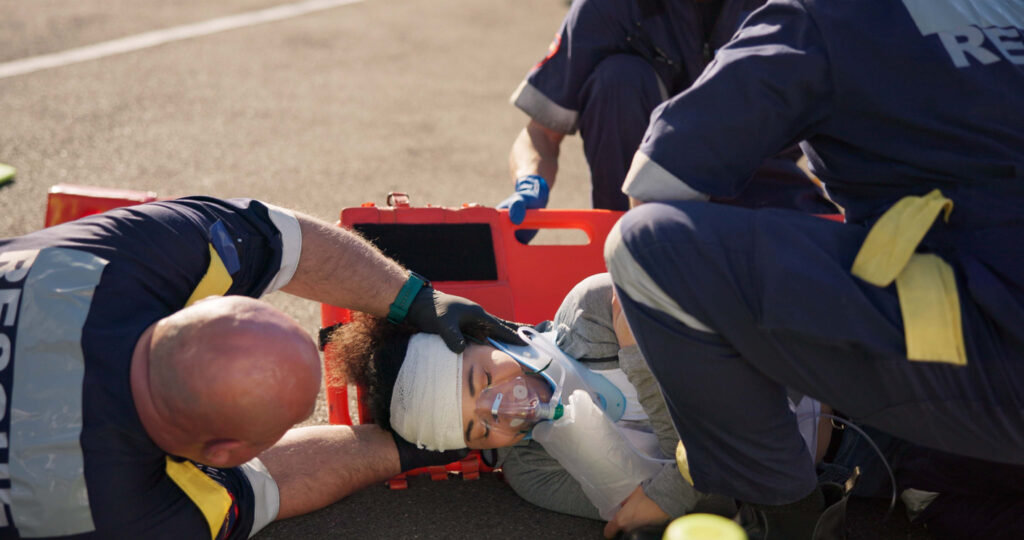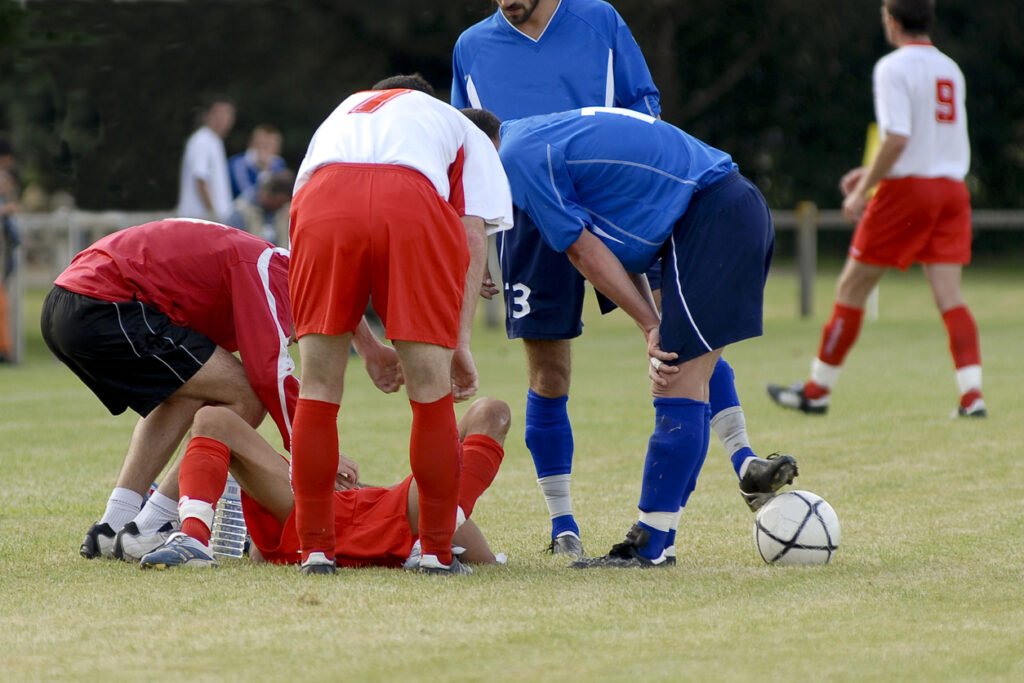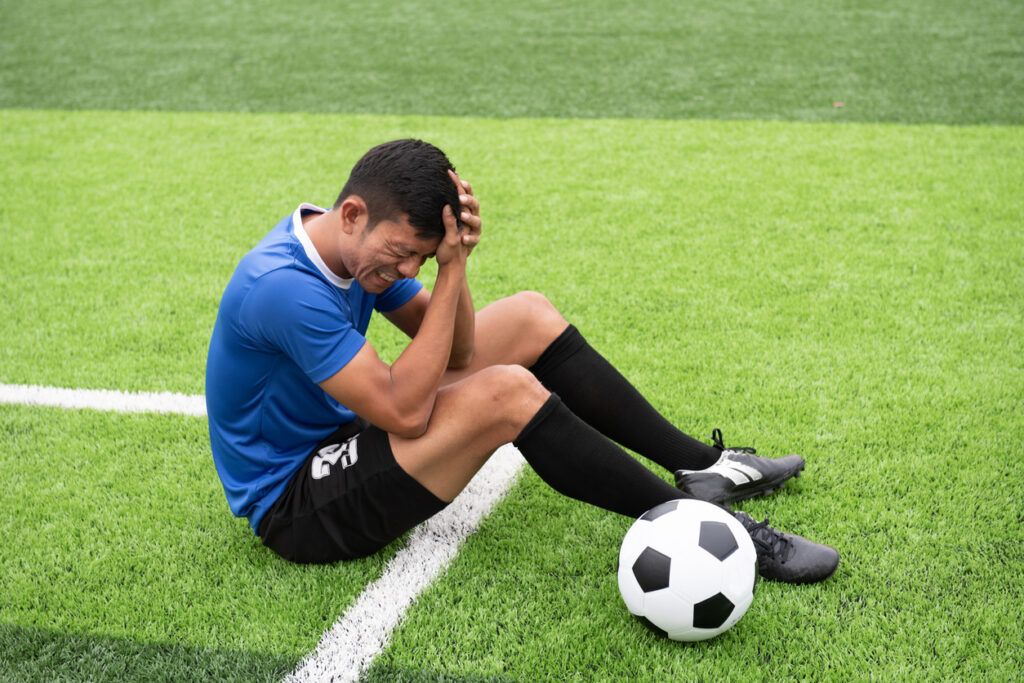The National Football League is synonymous with high-impact physical performance, but behind the spectacle of touchdowns and tackles lies a grim reality: the long-term implications of NFL Football Players Head Injuries. These injuries not only affect immediate gameplay but also play a pivotal role in determining how long a player remains in the league. The average career length in the NFL already hovers around just over three years, and traumatic brain injuries significantly cut that figure even shorter. In this analysis, we examine how repeated head trauma shapes the trajectory of NFL careers and the legal and medical ramifications that stem from it.
Chronic Traumatic Encephalopathy and Its Damaging Role in NFL Career Longevity
One of the most studied consequences of NFL Football Players Head Injuries is Chronic Traumatic Encephalopathy (CTE). This degenerative brain disease is commonly found in athletes who sustain repetitive head trauma, especially in contact sports like football. CTE symptoms include memory loss, confusion, impaired judgment, aggression, depression, anxiety, and eventually, progressive dementia. While these symptoms can emerge years after a player retires, they often begin developing subtly during the active years—impacting performance, team relationships, and long-term contracts.
CTE has become an anchor dragging down player potential, leading many athletes to retire early rather than face long-term cognitive decline. In fact, many high-profile players have stepped away from the game in their prime, citing fears over brain health. This pattern contributes to shorter professional durations and highlights the destructive relationship between concussive injuries and career length.
Subconcussive Hits: The Unseen Career Killer
While concussions receive the bulk of the media and medical attention, subconcussive hits—those that don’t cause immediate symptoms—accumulate over time and are just as devastating. These hits occur regularly during games and practices, often going undetected or unreported. The NFL’s physical nature guarantees these microtraumas are almost unavoidable.
A growing body of research shows that athletes subjected to thousands of NFL Football Players Head Injuries via subconcussive blows may suffer from reduced mental processing speeds and slower motor response times. These cognitive slowdowns aren’t always visible to fans but are evident in film reviews and performance metrics. The result is a subtle degradation of a player’s capabilities, leading to lower ratings, lost starting roles, and truncated contracts.
Position Matters: Risk of Head Injury by Role
Not all positions in the NFL face equal risk when it comes to head injuries. Linemen, linebackers, and running backs face significantly more frequent impacts, both concussive and subconcussive, than their counterparts in other positions. Quarterbacks and wide receivers may suffer from more severe individual hits, especially when blindsided, but linemen endure a relentless barrage of contact every snap.
This constant physical toll contributes directly to early exits from the sport. Offensive and defensive linemen often retire after just a few seasons, sometimes despite having made Pro Bowl rosters or even receiving All-Pro honors. The pattern is clear: repeated head trauma results in shorter, less stable careers, even among top-performing players.

Contract Structures and the Economic Cost of Brain Injuries
NFL contracts are structured in a way that reflects the league’s awareness of the brevity of a player’s career. Most contracts are not fully guaranteed, especially for players not drafted in the first round. This means players who suffer from NFL Football Players Head Injuries risk not only their health but also their financial security.
Injuries sustained on the field can lead to being cut from a roster without full payout. Insurance options are limited and injury settlements often fall short of long-term medical needs. As a result, players who leave the league early due to head trauma may face both cognitive decline and financial hardship. This dual burden often forces former players into advocacy, coaching, or public speaking to stay afloat.
The Legal Terrain: Workers’ Compensation and Long-Term Injury Claims
For years, players injured on the field had little recourse beyond basic NFL benefits. That landscape is shifting. Legal claims regarding NFL Football Players Head Injuries are increasingly being addressed through workers’ compensation channels, especially in states like California and North Carolina, which have more favorable legal environments for athletes seeking restitution.
In many of these cases, former players seek compensation not only for their medical bills but also for their reduced quality of life, early retirement, and lost income potential. Courts and legal precedents now increasingly recognize that these injuries are cumulative workplace hazards. Players are no longer seen as just entertainers, but as employees suffering long-term harm from unsafe work conditions.
According to a U.S. Government Accountability Office report, occupational injuries sustained by professional athletes warrant specific legal protections and pathways to compensation, especially when those injuries result in permanent cognitive damage. This acknowledgment adds substantial weight to legal claims made by former NFL players and may set new standards for future litigation involving repetitive brain trauma.
Medical Advancements and the Role of Early Detection
Modern medicine is playing catch-up with the severity and complexity of NFL Football Players Head Injuries. While helmet technology has improved, it still cannot prevent the brain from sloshing inside the skull upon impact. Early detection and sideline concussion protocols are better than in the past, but they remain inconsistent across franchises.
Recent advances in neuroimaging and biomarker testing offer hope. If fully integrated into routine player monitoring, these innovations could detect neurological issues before they become irreversible. However, even with early identification, the long-term implications of repeated trauma remain bleak for many athletes.
The pressure to play through pain, fear of losing starting roles, and contractual pressures often override medical advice. As a result, many injuries go untreated or underreported, compounding the long-term consequences and leading to premature retirement.
Mental Health Struggles and Post-Career Life
The toll of NFL Football Players Head Injuries extends well beyond the physical. Many former players suffer from depression, anxiety, substance abuse, and even suicidal ideation as a result of their cognitive decline. These struggles are often exacerbated by the loss of structure, identity, and camaraderie that comes with retirement.
Mental health services for retired players have expanded, but gaps still exist. Without sufficient care, these individuals struggle to transition into post-NFL life, whether they played two seasons or ten. Many attribute their struggles not just to the abrupt career end, but to the underlying neurological damage that continues to manifest long after the final whistle.

Lawsuits and Settlements: The Growing Legal Precedent
The NFL concussion settlement program, launched in 2017, was a major milestone acknowledging the link between NFL Football Players Head Injuries and long-term damage. However, the settlement process has not been without controversy. Many former players claim the process is too cumbersome, the payout formulas are biased, and the burden of proof too high.
Despite these flaws, the legal precedent is important. It sets the stage for similar actions in other professional sports and encourages players to seek proper documentation and legal consultation early in their careers. The legal community is increasingly recognizing that these head injuries are more than unfortunate accidents—they are foreseeable and preventable occupational hazards.
Implications for the Future of Football
The increasing awareness of NFL Football Players Head Injuries has forced the league to evolve. Rules have changed, penalties for dangerous hits have become more severe, and player safety is now a constant topic in league meetings. Despite these efforts, football remains a violent sport at its core, and true prevention of brain trauma seems unlikely without fundamentally altering the game.
This reality has led some parents to steer their children away from football entirely, favoring sports like baseball or soccer. It also means the NFL’s talent pipeline may eventually shrink, and fewer players may be willing to sacrifice their long-term health for a short-lived career.
A Deeper Understanding of the Lifelong Impact
Understanding how NFL Football Players Head Injuries affect more than just career length is essential. These injuries ripple into every aspect of a player’s life—emotional, relational, financial, and physical. The implications don’t end when the player steps off the field for the final time. Many live with the consequences for decades, and for some, those consequences become fatal.
This holistic view of brain trauma’s impact should inform future medical protocols, contract negotiations, and player support systems. Ignoring the issue not only shortchanges the athlete but also undermines the integrity of the sport itself.

The Legal Lens: Evaluating Responsibility and Preventability
From a legal standpoint, the NFL has a duty to maintain safe working conditions for its players. With mounting evidence of the long-term damage caused by repetitive head trauma, the conversation is shifting from treatment to prevention and accountability. If head injuries can be linked to coaching decisions, poor medical oversight, or equipment failures, liability becomes a central issue.
Legal frameworks are beginning to acknowledge the unique risk faced by football players. Attorneys working in the space have helped redefine what counts as “injury” under worker protection laws, ensuring that neurodegenerative conditions aren’t dismissed simply because they take years to manifest.
In-depth legal resources such as this detailed overview on common NFL head injuries expand on the technical definitions and compensable outcomes of repeated brain trauma in professional football.
Navigating Life and Legal Options After an NFL Career Ends
For many former players, the end of their NFL journey marks the beginning of a legal one. With the right documentation, legal advice, and advocacy, they may access financial compensation, health benefits, or other forms of restitution. Those unaware of their options risk falling through the cracks—both medically and financially.
To better understand how to secure legal representation after suffering brain injuries in sports or accidents, former athletes can benefit from reading this insightful guide on affording personal injury attorneys in Charlotte. This resource explores the financial considerations involved in seeking legal aid and outlines practical pathways for funding your case.

Leave a Reply